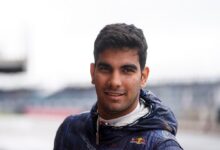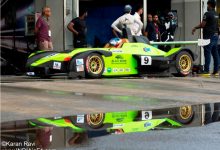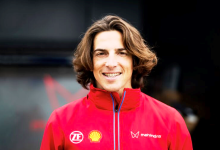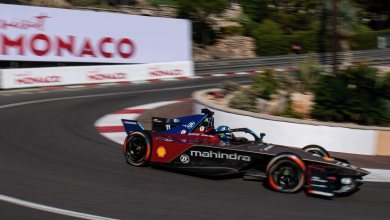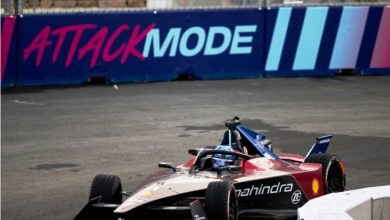Wheel-to-wheel in the Vegas erace

Las Vegas, 8 Jan 2017: In a bid to tap the growing influence of gaming and technology on the world of sports, the FIA Formula
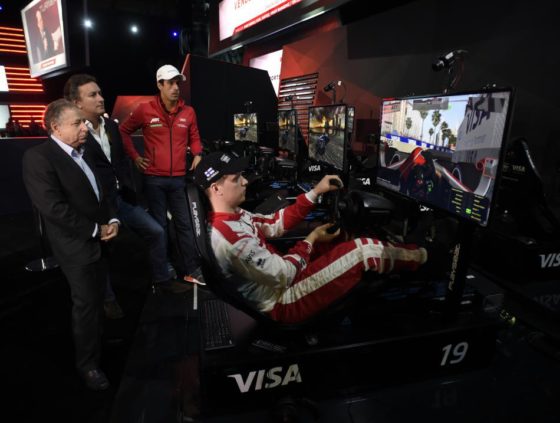
E Championship Saturday pitted motorsports’ leading racers against Sim—or simulated—racing competitors who have honed their skills behind steering wheels connected to sophisticated computers.
The competition took place not on a track, but in a Las Vegas convention hall hosting the 50thannual CES, the world’s largest consumer electronics and consumer technology tradeshow. The $1 million total purse awarded in the VISA Formula E Vegas eRace made it the richest in esports racing history.
An enthusiastic gathering of media, exhibitors, industry analysts and the FIA President Jean Todt watched history in the making as the drivers and sim racers went wheel-to-wheel on the famous Las Vegas Strip.
Bono Huis, the Faraday Future Dragon Racing sim racer, clinched victory in the inaugural Visa Vegas eRace and with it the biggest prize in eSports racing history – walking away with $200,000 and securing an additional $25,000 for pole position.
Huis, who topped every session throughout the event, made a clean getaway from the line and held on to his lead throughout the first stint. Following the first round of pitstops, the Dutch driver dropped to second place behind Olli Pahkala (Mahindra Racing). Huis eventually inherited success from Pahkala who was handed a 12-second penalty following a post-race investigation for having gained an unfair performance advantage caused by a software issue. Pahkala took the lead mid-way through the race, but was later found to have suffered a technical glitch with a sustained power delivery of FanBoost over and above the limit for five laps during his second stint. Pahkala was demoted to third place following the application of the time penalty and rounded out the podium finishers.
Despite entering unknown territory, the Formula E drivers demonstrated that driving ability is comparable across both a real and virtual world. Felix Rosenqvist (Mahindra Racing) showed his natural ability for sim racing and versatility putting in a strong performance to finish second as the best-placed Formula E driver.
Jose Maria Lopez (DS Virgin Racing), Sam Bird (DS Virgin Racing), Daniel Abt (ABT Schaeffler Audi Sport) and Nelson Piquet Jr. (NextEV NIO) finished in the top-10, again highlighting the close competition between the drivers and sim racers. David Greco (Renault e.dams) crossed the line in 15th place, but picked up fastest lap and $10,000 in the process.
Just as it pioneered electric car racing on city streets around the world, Formula E created the groundbreaking CES event, which attracted and retained a large crowd during the four-hour qualifying round and race and the 20-lap final contest. The format largely mirrored a traditional Formula E race.
Formula E incorporated iconic elements of the Las Vegas Strip into the specially designed virtual e-course, which drivers were not able to experience until practice sessions that began Friday. Drivers sat in individual simulated cockpits in Playseat gaming setups running rFactor 2 software. The software offered strikingly realistic views of the course on both the competitors’ individual consoles and on the massive screens on which the throngs of fans watched inside the convention hall.
Unlike the commercially popular arcade racing games, professional sim racing software simulates the real-world considerations professional drivers must master, including energy usage, damage, tire wear and suspension. It ensures that sim racers understand the challenges of real-world racing.
Earlier in the day at a CES panel that was part of CES’ Sports Business Innovation Summit, FIA President Jean Todt and Formula E CEO Alejandro Agag gave a nod to the importance sim racing may play in expanding the motorsports fan base. “Clearly, this new technology, this new way of allowing people to access motor sports, is a new opening,” Todt said.
After the panel, Todt visited CES’ Eureka Park, home to more than 500 start-ups companies looking to launch new products, services or ideas. While there, he spent time surveying the booths of French start-ups.
Todt also visited CES’ Self-Driving Technology Marketplace, which showcases technology advancing autonomous-automated driving (including parking assistance), collision avoidance and emergency braking. The marketplace touts the statistic that advanced vehicle technology could eliminate more than 90 percent of U.S. road traffic deaths. While in the marketplace, Todt experimented with a driver-less BMW.
